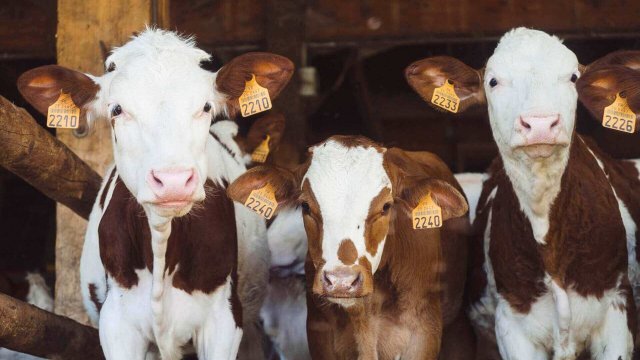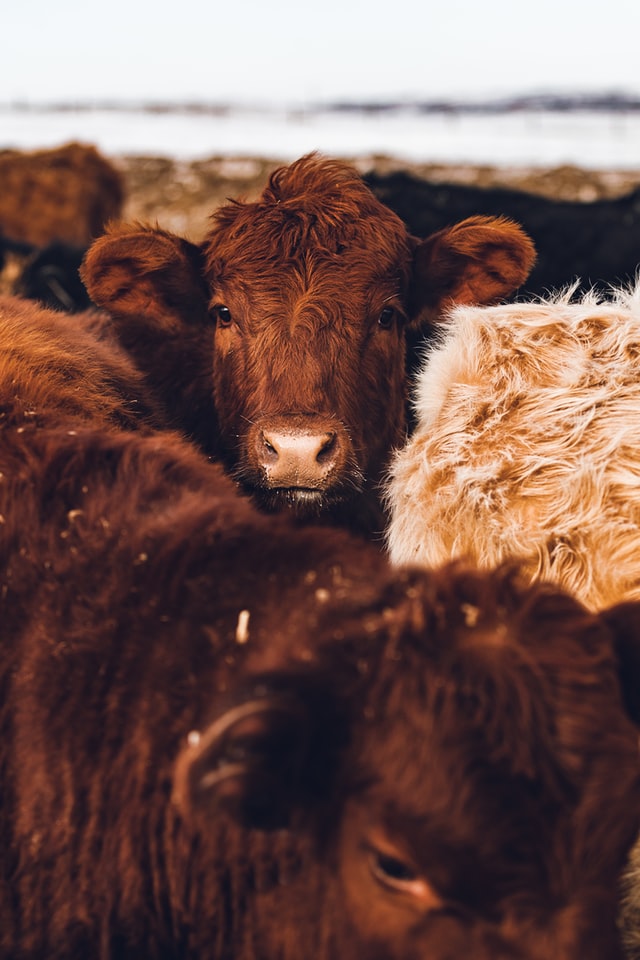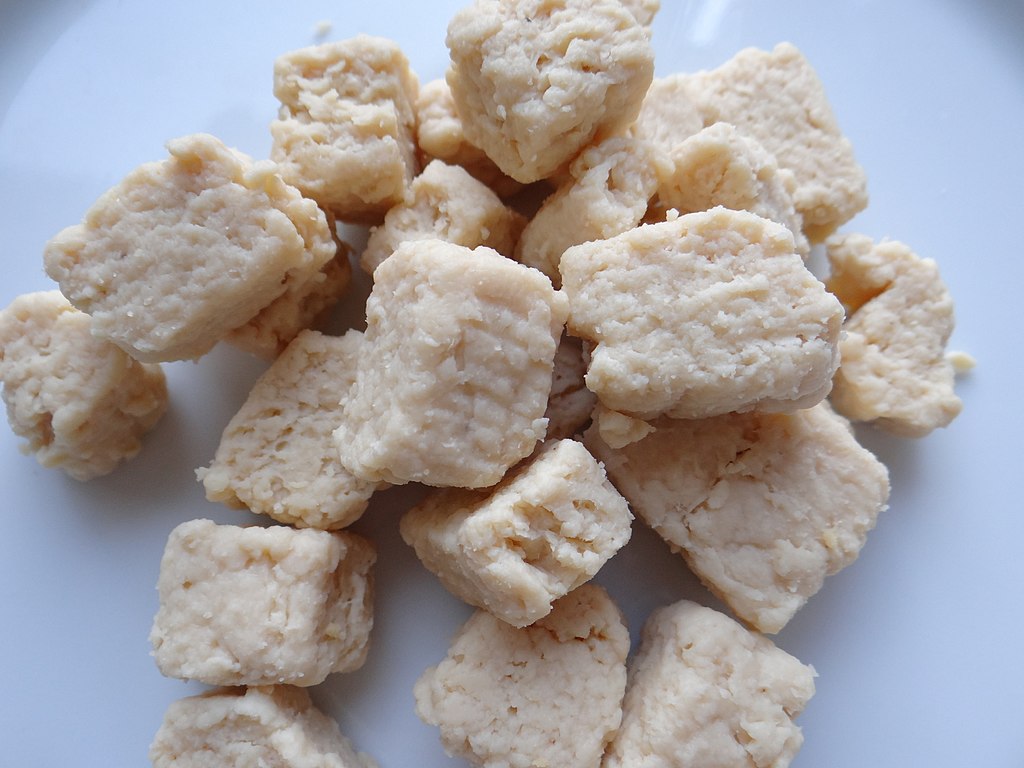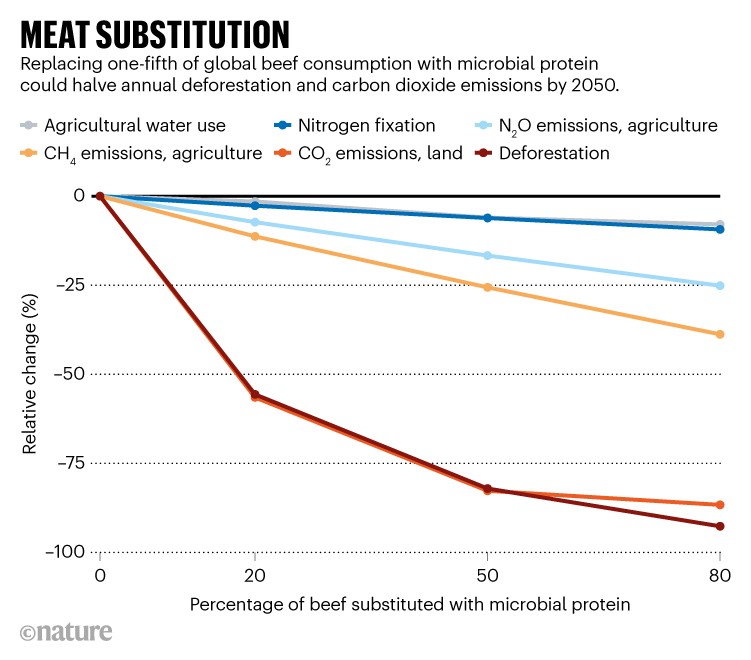
- Sustainable Planet -
- 5mins -
- 1,130 views
Eating one-fifth less beef could halve deforestation by 2050
Modelling study finds replacing just 20% of global beef consumption with a meat substitute within the next 30 years could halve deforestation and the carbon emissions associated with it.
Swapping 20% of Beef for Meat Substitute Could Halve Deforestation in 30 years
According to analysis by the Potsdam Institute for Climate Impact Research (PIK)—which for the first time attempted to predict the potential impact of market-ready meat substitutes—substituting a fifth of the beef consumed globally with microbial protein, such as Quorn mycoprotien, could halve deforestation by 2050.
“We found that if we substituted 20 per cent of ruminant [hoofed herbivorous grazing mammals] meat per capita by 2050, annual deforestation and CO2 emissions from land-use change would be halved compared to a business-as-usual scenario,” said Florian Humpenöder, lead author of the study.

Beef farming is a top driver of deforestation worldwide
The findings, published in Nature on 4 May1, come one month after the United Nations Intergovernmental Panel on Climate Change warned that humanity is nowhere near on track to limit global warming to 1.5 ºC above pre-industrial levels.
Beef farming is a top driver of deforestation worldwide, and cattle raised for beef are a major source of methane, a more potent greenhouse gas than carbon dioxide.
Replacing beef with meat alternatives could reduce some of the food production’s environmental footprint, but it won’t solve the climate crisis, says study lead author Florian Humpenöder, a sustainability scientist at the Potsdam Institute for Climate Impact Research in Germany. “It should not be seen as a silver bullet,” he says.
Previous research has shown that replacing beef with a meatless alternative called mycoprotein can have beneficial effects on the environment. Produced in steel tanks by fermenting a soil-dwelling fungus with glucose and other nutrients as a food source, mycoprotein is a meat substitute that made its debut in the United Kingdom in the 1980s under the brand name Quorn and is now readily available in many countries.
Source: Nature.com

Current global increase in beef consumption would double annual rate of deforestation globally
Humpenöder and his colleagues are the first to estimate the environmental effects of partially replacing beef with mycoprotein over time, Franziska Gaupp, who studies food systems at the Potsdam Institute for Climate Impact Research told Nature’s Giorgia Guglielmi. Previous analyses didn’t take into account changes in population growth, food demand and other socio-economic factors.
The team used a mathematical model that considered increases in population growth, income and livestock demand between 2020 and 2050. Under a business-as-usual scenario, the global increase in beef consumption would require the expansion of pasture areas for grazing and of cropland for feed production, which would double the annual rate of deforestation globally. Methane emissions and agricultural water use would also increase.
Replacing 20% of the world’s per-capita beef consumption with mycoprotein by 2050 would reduce methane emissions by 11% and halve the annual deforestation and associated emissions, compared with the business-as-usual scenario (see ‘Meat substitution’). The mitigating effects on deforestation are so great because, under this scenario, global demand for beef does not increase, so there is no need to expand pasture areas or cropland for feeding cattle, Humpenöder says.
The beneficial effects on deforestation eventually plateau out. Swapping 50% of the beef consumed per person for mycoprotein would result in a more than 80% reduction in deforestation and carbon emissions, and replacing 80% of beef with mycoprotein would eliminate about 90% of forest loss.
All levels of substitution would result in relatively minor changes in agricultural water use, the researchers found. That’s because the water required to grow crops for feeding cattle would go towards growing other types of crop, including those for human consumption, Humpenöder says.
Source: Nature.com

replacing beef with mycoprotein has its own potential drawbacks
Global assessments such as the one carried out by Humpenöder’s team could help to highlight more-sustainable ways to produce food, Hanna Tuomisto, who studies sustainable food systems at the University of Helsinki, told Nature.com
Tuomisto notes that producing mycoprotein can require more electricity than producing beef, so researchers should consider the environmental impacts of producing extra power. She also points out that replacing beef with mycoprotein means that some by-products of cattle farming, such as leather and milk, might then be made in alternative ways that have environmental impacts.
“This study is a great start,” Gaupp says. Future research, she adds, should look at the environmental effects of replacing beef with other types of meat alternative, such as laboratory-grown meat or plant-based alternatives.
Source: Nature.com



